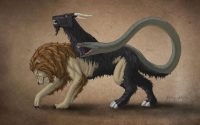Mythical Creature – Golem
When it comes to the mythical creatures, there are a lot of options that you can choose from. Depending on your own personal preference, you can go with a creature that is active, or one that is more symbolic. However, there are many things that you need to know about the creature that you choose. For example, you will need to learn about its Symbolism and its Creation. You will also need to learn about its Heritage and the way it Activates.
Legend
The Golem is a Jewish giant of folklore. It’s a mythic creature with supernatural powers. In the ancient tales, it appears during times of crisis.
A golem is a clay creature that is brought to life by an intelligent person. This can be done by inscribing a few Hebrew letters on the creature’s forehead or skin.
Golems are unassuming monsters that can be helpful, but also destructive. They can serve as a protective force or companion for the creator. However, when not well-made, they can become a threat to the community.
Golem stories are a popular subject of modern Yiddish and Hebrew literature. The legend serves as a symbol of creation, hubris, and salvation.
Creation
Golems are mythical creatures that have appeared in a variety of cultures throughout history. They are generally described as a humanoid figure made of clay, but can also be constructed of other materials. Usually, they are animated by magic.
The legend of the golem is complex. It has long been a symbol of hope, power, and resistance. Throughout the centuries, it has been an inspiration to both science fiction and fantasy writers. Some contemporary writers have even found the concept to be a rich source of narrative potential.
One of the more famous golems was created by a rabbi in Prague, Czechoslovakia in the 16th century. Known as the “Golem of Prague,” this magical creature was said to protect the Jews of the city from persecution. It was fashioned of clay and wore a mystical amulet.
Symbolism
The golem is a figure that has been a source of inspiration to artists and writers for centuries. It is a figure of Jewish folklore that appears in literature, films, art and video games. Typically, the golem serves as a protective figure for Jews during times of persecution. They also serve as a model of resistance against antisemitism.
Traditionally, the golem has been associated with women. However, this image has changed throughout history.
In the Middle Ages, the creation of a golem was often a symbol of holiness. Only the righteous could bring godly powers into clay.
Several versions of the golem story are rooted in the Talmud, a form of Jewish literature. The earliest reference to the golem is in the book of Psalms. According to this text, Adam was a golem for his first twelve hours of life.
Films
There are a number of films about the mythical creature Golem. These movies range from the supernatural to the humorous.
‘The Golem’ takes a traditional story and brings it to the 21st century. It is an interesting take on a classic legend. The story involves a Jewish community in 17th-century Lithuania. At that time, the village was isolated from the rest of the world by the plague.
The Golem is a powerful figure who protects the people in the village from external threats. He was also a symbol of rebirth and purity.
Originally, the Golem was made to help the Jews. But his noble intention is corrupted by a wicked man.
Heritage
The Golem is a mythical creature that is said to protect Jews during times of crisis. A golem is a clay figure that supposedly awakens from its slumber to defend the Jewish people.
Its ability to protect the Jewish people is not the only reason it has become a folk hero. It is a powerful symbol of the hope and resilience of the Jewish people.
In the modern day, the golem has inspired a range of art and literature. It has also prompted video, sculpture and digital artwork.
One of the best known golem stories is that of a rabbi named Judah Loew. He was a renowned Talmudic scholar and Jewish mystic. His congregation experienced persecution in 1580. After the attack, Loew created a golem out of clay from the banks of the Vltava River.



